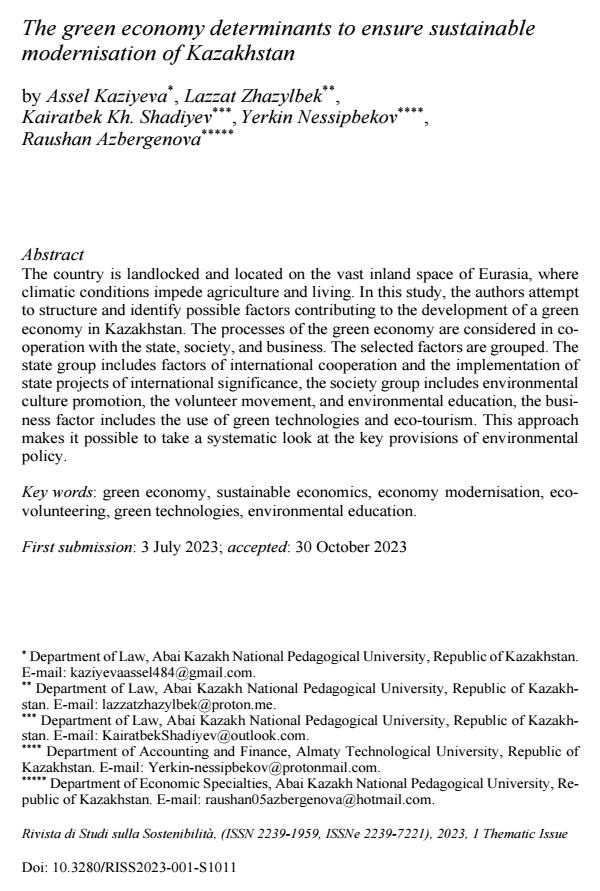The green economy determinants to ensure sustainable modernisation of Kazakhstan
Journal title RIVISTA DI STUDI SULLA SOSTENIBILITA'
Author/s Assel Kaziyeva, Lazzat Zhazylbek, Kairatbek Kh. Shadiyev, Yerkin Nessipbekov, Raushan Azbergenova
Publishing Year 2023 Issue 2023/1 T.
Language English Pages 16 P. 167-182 File size 120 KB
DOI 10.3280/RISS2023-001-S1011
DOI is like a bar code for intellectual property: to have more infomation
click here
Below, you can see the article first page
If you want to buy this article in PDF format, you can do it, following the instructions to buy download credits

FrancoAngeli is member of Publishers International Linking Association, Inc (PILA), a not-for-profit association which run the CrossRef service enabling links to and from online scholarly content.
The country is landlocked and located on the vast inland space of Eurasia, where climatic conditions impede agriculture and living. In this study, the authors attempt to structure and identify possible factors contributing to the development of a green economy in Kazakhstan. The processes of the green economy are considered in cooperation with the state, society, and business. The selected factors are grouped. The state group includes factors of international cooperation and the implementation of state projects of international significance, the society group includes environmental culture promotion, the volunteer movement, and environmental education, the busi- ness factor includes the use of green technologies and eco-tourism. This approach makes it possible to take a systematic look at the key provisions of environmental policy.
Keywords: green economy, sustainable economics, economy modernisation, eco- volunteering, green technologies, environmental education.
Assel Kaziyeva, Lazzat Zhazylbek, Kairatbek Kh. Shadiyev, Yerkin Nessipbekov, Raushan Azbergenova, The green economy determinants to ensure sustainable modernisation of Kazakhstan in "RIVISTA DI STUDI SULLA SOSTENIBILITA'" 1 T./2023, pp 167-182, DOI: 10.3280/RISS2023-001-S1011